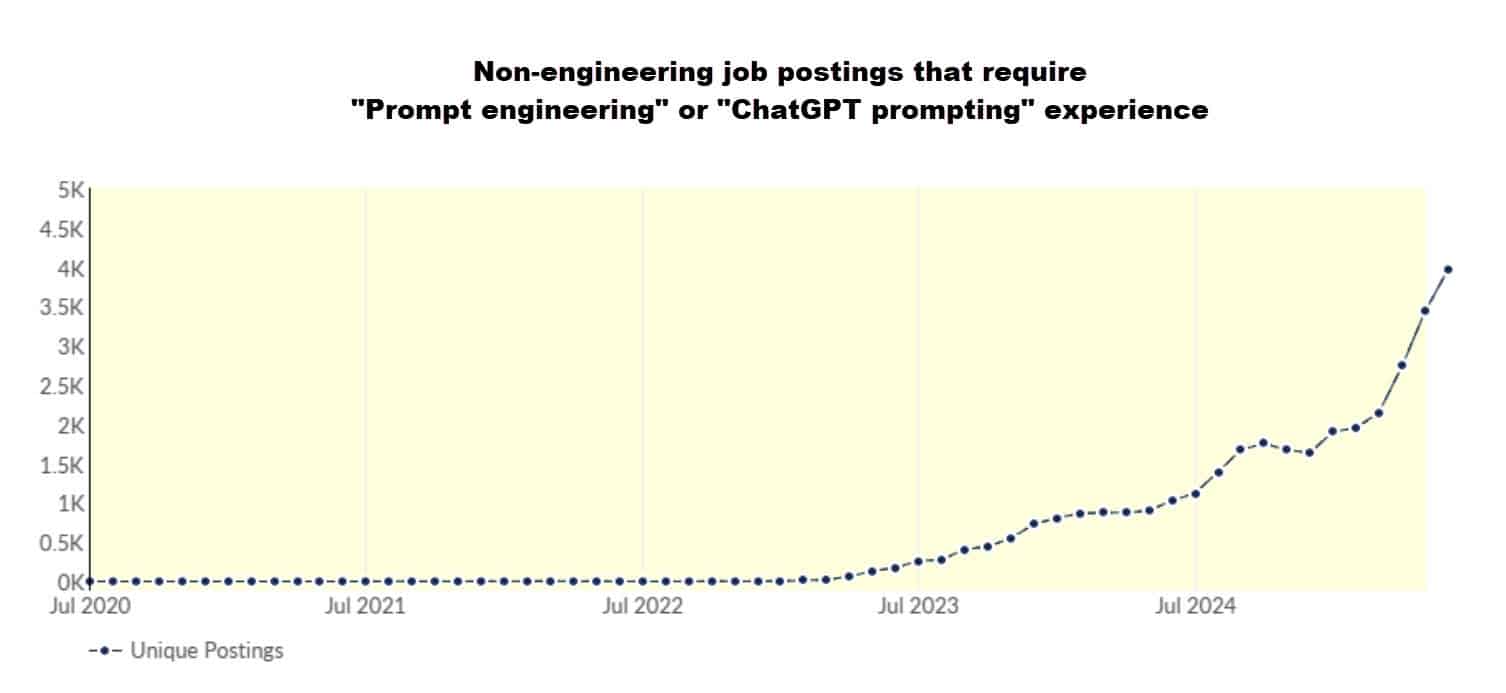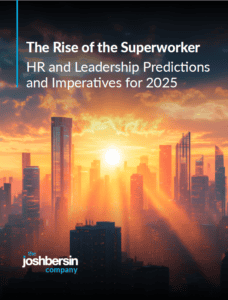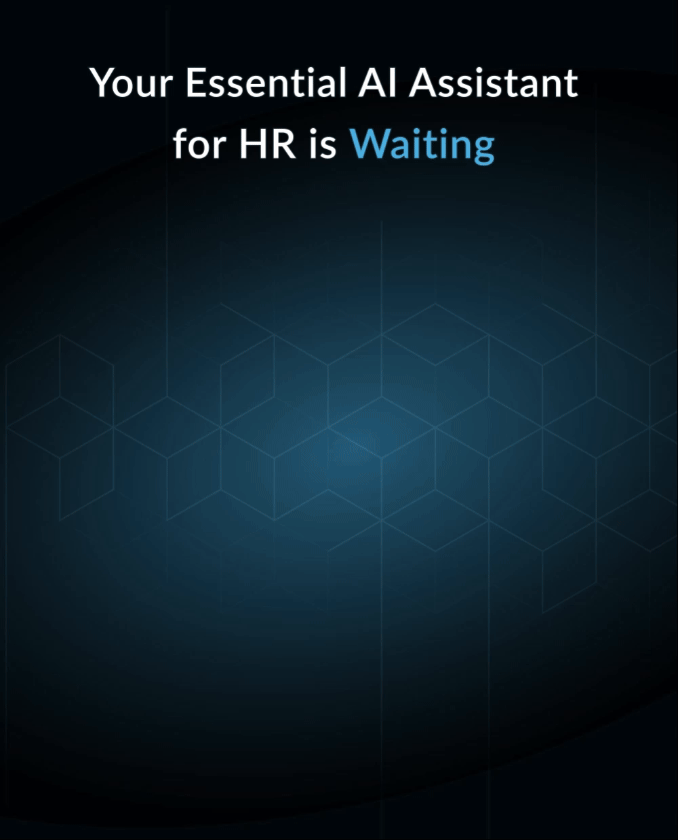Prompting is Programming: We’re All Software Engineers Now!
If you think software programming is a techie niche for hoodie-clad coders pounding on keyboards, think again. Welcome to a new era, one where every business leader, HR professional, and even frontline manager is, in effect, a software engineer.
That may sound strange, but stay with me. Because this shift is about empowerment, AI, and the future of work, something we’re all concerned about.
Everyone is talking about “AI Literacy” and the need to upskill our workforce for the “Superworkers” of tomorrow. What does that really mean?
Well today, “prompting” is the new programming, and just like we all learned to program our spreadsheets, now we can program our AI assistants. And yes, every time you talk to ChatGPT, Copilot, or Galileo, you are essentially writing software. Your prompts are code.
Your carefully constructed instructions, your clarifying questions, your follow-up queries — these become the building blocks of a dynamic program that drives the AI to perform tasks, analyze data, and solve problems for you. And if you store them and ask the agent to “summarize them and put them into a plan,” the system writes them into reusable code.
The LLM is perfect for this. These engines are taking your English (or your Spanish, German, or Japanese) and turning it into executable instructions. So you are, in effect, programming in natural language.
Just like a spreadsheet user in the 1980s started writing formulas instead of long-hand arithmetic, you are now writing prompts instead of lines of JavaScript or Python. It’s a revolutionary mental shift, and one that will differentiate AI “Superworkers” from their peers.
And it matters. A lot.
From Spreadsheets to Prompts: A Once-in-a-Generation Leap
Think back to the dawn of the spreadsheet era. I remember the early days of Multiplan, Lotus 1-2-3, and Excel. These tools transformed how we managed data, built budgets, ran “what-if” scenarios, and automated many business processes. Millions of businesspeople became *power users* who could build sophisticated models without a programming degree.
Prompting and generative AI are taking that revolution to the next dimension. Prompting is the macro language of the next decade.
Instead of memorizing spreadsheet cell references, you’re designing prompts that instruct AI to build job descriptions, analyze culture fit, draft offer letters, and design onboarding plans. And the possibilities are limitless.
For example, in the Galileo HR Platform, there are more than 300 built-in prompts — mini applications in themselves — that can instantly analyze compensation data, summarize interview feedback, and compare skills against your leadership models. And they’re editable! You can tweak them, extend them, remix them.
You, as HR professional, are now a developer, building reusable apps that power your people processes, with no code except your own words.
(Look at the explosive growth in non-engineering jobs that require “prompt engineering” skills. It’s almost a vertical growth curve!)
 |
Let’s Break Down a Practical Example
Imagine the simplest, most critical HR task: creating a job description. Traditionally, you’d interview a few managers, collect their ideas, look at existing job descriptions, review for bias, and apply the company culture template. Then research skills and education requirements, salary bands, cross-check with job titles in the market, and start your search. It’s a week (or more) of work only getting you started.
And once you “post” the job, you realize that you may be getting the wrong candidates. So you have to tighten the job requirements, revisit skills, and rethink the job title. It’s a complex and important process, one that needs data from many people and external sources.
Now, with prompt-based AI, you can do something like this:
- Tell Galileo to send emails to managers asking for description of the role (they can email or record an answer)
- Ask Galileo to generate a job description, using your company’s template (which you load into a folder)
- Ask Galileo to identify the competencies, skills, and responsibilities (using the Lightcast data in Galileo)
- Cross-check job for pay (using Galileo’s compensation data)
- Ask the AI to validate pay against peers in the department
- Apply your company’s values and cultural principles (from your corporate template)
- Ask Galileo to circulate the final for approval (ask the AI to circulate and get feedback, let the AI summarize changes and apply)
- Ask Galileo to format the posting for the recruiting system (with custom fields as needed)
- Post the job.
In minutes, you’ve compressed weeks of tedious work into an intelligent, automated workflow — purely through a prompt.
And now that you’ve built this stream of requests, ask Galileo to “save this prompt and rewrite it in a form for others to use.”
Galileo will summarize and format the prompt for reuse, save it in the task library, and help you share with colleagues.
Ask others to improve it over time. Suddenly you’re working like a software engineering team, with version control on your prompt libraries, peer review of prompt quality, and continuous improvement.
It’s software engineering, HR-style. And you have suddenly become a Superworker.
Why This Should Thrill Every HR and Business Leader
I cannot emphasize enough how big this is: it’s the AI transformation of work. And you don’t have to wait for your HCM or payroll vendor to build what you need.
 Prompting is a new world of business-ready IDEs (integrated development environments). Galileo, Copilot, and other platforms are the super-powered spreadsheets for businesspeople. They turn you into a creator of applications, automations, workflows, and analysis tools, simply by using your own language.
Prompting is a new world of business-ready IDEs (integrated development environments). Galileo, Copilot, and other platforms are the super-powered spreadsheets for businesspeople. They turn you into a creator of applications, automations, workflows, and analysis tools, simply by using your own language.
This brings you:
- Speed and scale — what used to take weeks is compressed into hours
- Personalization — your prompt can adapt to *your* data, *your* style, *your* business rules
- Empowerment — you don’t have to wait for an IT department or vendor to build a custom workflow
- Innovation — you can test ideas, learn, improve, and share best practices faster than ever.
If you’re a recruiter, imagine screening 100 resumes. Galileo (our example) can summarize the top skilled individuals in the list, sort by experience, location, culture fit, and more. This type of automation will save you months, and as you use it more you can make it better and better.
This is real. This is now. This is your new skill set.
Building a Culture of “AI Literacy”
Let’s not kid ourselves. Just throwing AI tools at people will not make them experts overnight. We need easy to use tools like Galileo to get started. And then we need to build cultures that encourage experimentation, knowledge-sharing, and learning.
Just as the finance department once had “Excel gurus”, we need “prompt mentors” to help us build, refine, and scale our AI workflows. And some of us will become experts, teaching others to do more.
Where We Go From Here
Let me leave you with this: prompting is not only a technical skill. It’s a new literacy, a new managerial competency, a new source of competitive advantage.
If you treat prompting as a casual toy — a place to ask random questions — you miss the power of these systems. If you treat prompting as programming, you harness a thousand times more value.
Just as Excel empowered a generation of power analysts, prompting empowers us all to become Superworkers.
It is thrilling. It is daunting. It is a revolution happening in real time.
The future of work is here, and it starts today.
Additional Information
Learn more about the Galileo Platform. in the explainer video below. And once you buy Galileo, you get access to our task library, the video Galileo Success Center, and 700+ courses from Galileo Learn.
PS: If you have success stories to share, contact us. We’ll interview you, write about you, and invite you to our conferences!
